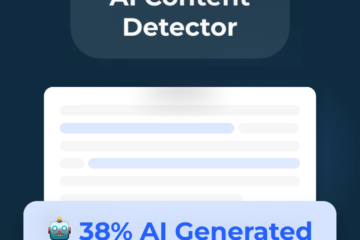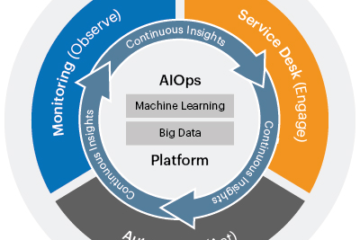AI for IT Operations, or AIOps, is a relatively new term. It’s a method for automating IT procedures with the use of big data and machine learning. With the help of AIOps, IT infrastructures can be tracked, analyzed, and fixed without any downtime. This facilitates quicker problem identification and resolution within IT departments, leading to greater operational efficiency and lower costs.
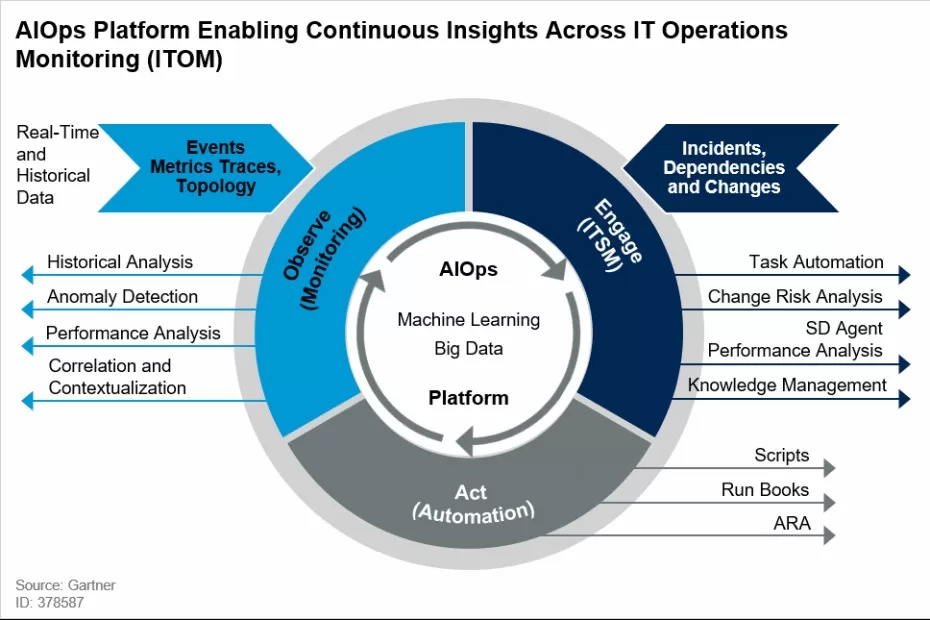
Some companies have reported a 66% decrease in their MTTR (mean time to resolution) after implementing AIOps. Some companies have reported a 66% decrease in their MTTR (mean time to resolution) after implementing AIOps. Gartner estimates that by 2024, 40% of companies will use AIOps for application and infrastructure monitoring.
How do AIOps operate?
Logs, metrics, and events are just some of the types of information that AIOps regularly gathers. Machine learning techniques are then applied to this information in order to spot trends and outliers. It is possible to use the algorithms to foresee potential issues and implement preventative steps.
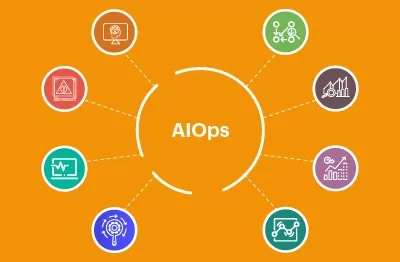
Benefits of Using AIOps
AIOps has numerous advantages that make it worthwhile to adopt it.
- AIOps can aid IT teams in detecting and fixing issues more swiftly than was previously possible. The result may be less downtime and happier customers.
- AIOps can assist IT departments in automating a variety of mundane processes, allowing them to devote more time and energy to strategic endeavors and improving operational efficiency.
- Cost savings: With the help of AIOps, IT departments can save money by reducing their reliance on expensive human labor and on emergency repairs.
When and how to use AIOps
In order to put AIOps into action, you must do the following:
- The initial stage is to gather information from many sources, such as logs, analytics, and events. This information can be gathered from a wide range of resources, including monitoring tools, cloud services, and application servers.
- Get the numbers ready: The data must be cleaned and formatted before it can be analyzed. The data must be cleaned, outliers must be eliminated, and the data must be normalized.
- Conditioning the AI: Machine learning algorithms must now be trained. To achieve this, we use archival data to train the algorithms. The algorithms can be trained to spot trends and outliers in the data.
- After the training process is complete, the algorithms can be put into production. The algorithms will subsequently be put into action in real time to detect issues within the IT infrastructure.
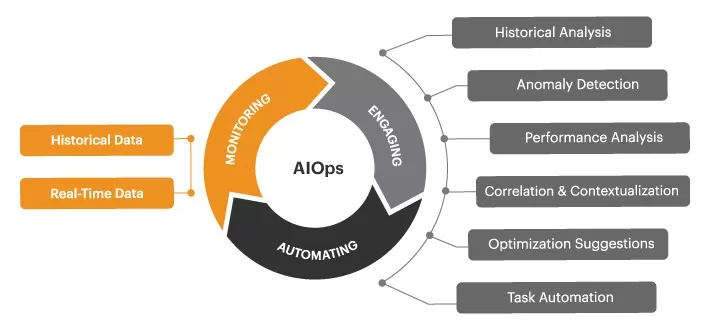
Problems Associated with AIOps AIOps has a few problems, such as:
Data quality
The success of AIOps relies heavily on the quality of the data being used. The algorithms’ ability to learn and detect issues relies on having clean and correct data to work with.
Complexity
Implementing AIOps can be difficult because of the complexity of the technology. It calls an in-depth knowledge of computer science and machine learning.
Cost
Investing in AIOps can be pricey. Some businesses may not be able to afford the AIOps costs of setup and upkeep.
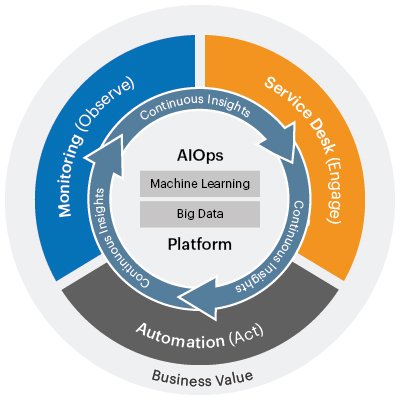
Next Steps for AIOps
The outlook for AIOps is promising. With the ever-increasing volume of data produced by IT systems, businesses will need AIOps to keep their IT departments running smoothly. FinOps, DevOps, and SecOps are just some of the operational business strategies that are increasingly being combined with AIOps. The combined efforts of these systems will help businesses function more efficiently.
Conclusion
AIOps is a potent piece of technology that may aid businesses in enhancing their IT operations. AIOps can help businesses save money, work more efficiently, and make their customers happier by automating routine processes, detecting issues sooner, and forecasting future complications.
The Next Steps
The EverythingOps meta-trend includes AIOps. The focus of this development is the integration of operational goals with corporate objectives. This idea is gaining traction as businesses look for ways to boost productivity.
Here are a few currently popular operational business practices:
- FinOps aids companies in controlling and improving their cloud budgets.
- DevOps refers to a set of practices and tools used in business that prioritize rapid delivery of software and services.
- ITOps is the process of getting departments to work together to buy and manage IT hardware.
- “SecOps” is an acronym for “security operations and operations automation,” which describes the partnership between IT operations and cybersecurity.
The EverythingOps meta-trend is just getting started, but it’s already making waves. We may anticipate even larger enhancements in operational performance as more and more firms embrace this strategy.







